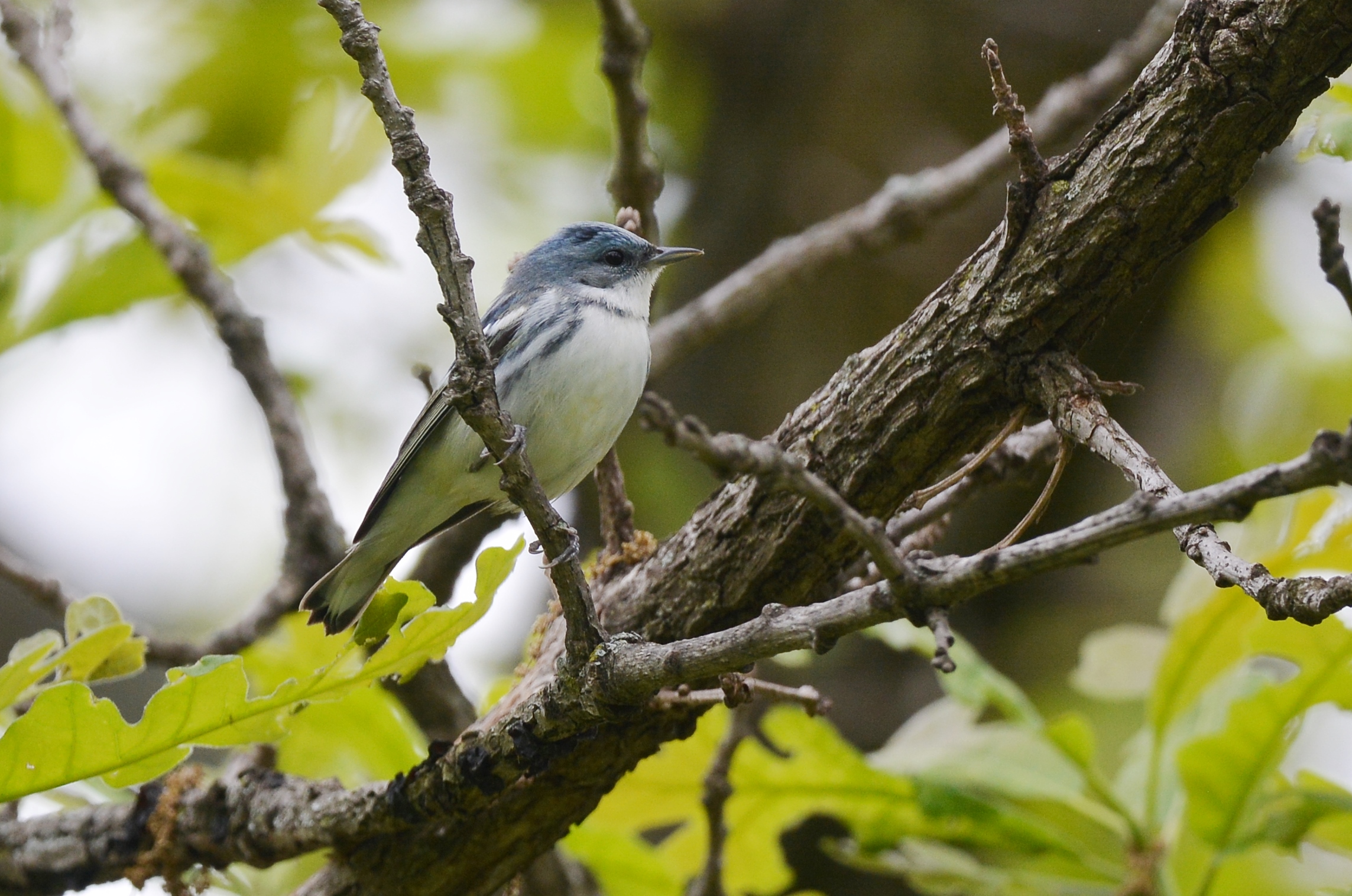New scientific surveys commissioned by the Indiana Forest Alliance show endangered and threatened species live in an area of the Hoosier National Forest that the U.S. Forest Service plans to log and burn, threatening the animals’ survival and destroying their precious habitat.
The cerulean warbler, a “species of concern” under the federal Endangered Species Act, was found in strong numbers in the forest’s Houston South area, according to a survey conducted this summer by bird biologist David Rupp. Nationally, the bird’s population has decreased by 70% since the 1960s.
In a separate survey, Cincinnati-based Environmental Solutions & Innovations Inc recorded echolocation call sequences consistent with five species of bats nationally listed as endangered, threatened, or under consideration for such designation in Houston South.
“If the federal government is going to do logging and burning in this area, we call on them to do it in a way that doesn’t further endanger these animals and takes the Endangered Species Act into account,” said Rae Schnapp, conservation director at the Indiana Forest Alliance.
“This forest in its natural condition is providing crucially important habitat for these species that are on the verge of disappearing from Indiana and, in the case of some of the bats, disappearing from the world,” Schnapp said. “It’s imperative that we protect their few remaining sanctuaries.”
Scientific analysis indicates the likely presence of endangered Indiana and gray bats in the area, and three species undergoing review for listing as endangered—Northern long-eared (currently federally threatened), little brown, and tricolored bats. These species along with the evening bat (also detected) are already listed as endangered by Indiana Department of Natural Resources.
If confirmed, the presence of these species and five other kinds of bats makes Houston South an area of “both regional and national importance for bat diversity,” the survey concluded.
Bats are severely threatened by white-nose syndrome, a fungal disease that develops around their muzzles and wings during hibernation. The Northern long-eared bat, for example, has lost 96% of its population in the last decade.
IFA calls on the U.S. Forest Service to prevent further threats to the bats by scheduling prescribed fires and logging in the winter outside of the maternity roosting season when the animals are hibernating in caves to avoid cutting down roost trees or engulfing them in fire, killing bat mothers and their young, known as pups.
Rupp, the bird biologist, said the government also could protect dense cerulean warbler clusters in Houston South by creating a 1.25-mile buffer off limits to timbering and burning on each side of the south fork of Salt Creek.
Rupp’s bird survey also found five species of special state concern in the Houston South area. They are the Eastern Whip-poor-will, the Broad-winged Hawk and three species of warblers—the Worm-eating, Black-and-White, and Hooded.
Another survey commissioned by Indiana Forest Alliance in the Houston South area found six species of bumble bees including the Golden Northern Bumble Bee and American Bumble Bee, which are declining across their range. Both have become “species of conservation concern” to the scientific community and American Bumble Bees have been petitioned for listing under the Endangered Species Act.
The survey by scientists at Environmental Solutions & Innovations Inc. recommends that the U.S. Forest Service and rural electric cooperatives consider impacts to pollinators when mowing and using herbicides to maintain wildlife openings and utility rights-of-way. Maintenance could be timed and targeted to help make sure a diversity of flowers is available to feed bees throughout their active season from April through October.
The Houston South area in Lawrence and Jackson counties is the focus of a U.S. Forest Service plan that would impact 13,500 acres of the forest through logging, burning or herbicide treatment.
In May, the Indiana Forest Alliance joined Monroe County government and the Hoosier Environmental Council in filing a lawsuit that seeks to halt the plan and require the U.S. Forest Service to reconsider it in a way that is consistent with the National Environmental Policy Act.
The plaintiffs are being represented by the public-interest law firm Eubanks & Associates, LLC.

